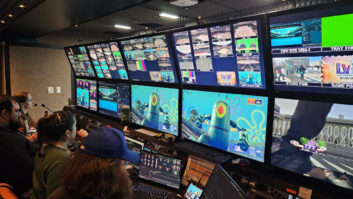
MAZeT, an embedded systems and optoelectronics developer, has introduced wireless control of LEDs from a smartphone or tablet. “A LED-based RGBx light box demonstrates vividly how the smartphone or tablet accurately controls the colour, colour temperature and brightness,” explained Frank Krumbein, product manager for colour and spectral sensor technology at MAZeT. Depending on the wireless connection, several light boxes can be managed simultaneously. This means they can all display a specific colour mix from the RGBW palette or also conjure up a scenario of different colours.” The human eye can discern no colour differences when the same colour is displayed on multiple light boxes, and there are also no differences when the operating conditions change or LEDs of different types or bins are used.
A True Color sensor from the JENCOLOR series ensures a constant colour scheme. Current wireless transmission technology and Android-based operating software complement this. MAZeT offers the electronics and control systems for luminaire manufacturers and system integrators as series-manufactured OEM modules.
For the sensor-based colour control for multi-channel LEDs, each lighting unit receives its target value from the smartphone via Bluetooth. The sensor measures the current LED-light and transmits the colour value to the microcontroller of the box. The micro-controller compares the current value with the value of the target and calculates the new LED driver signals. This process is so quick that visually it is imperceptible. The colour adjustment appears to be completely flicker-free. So with just a tap on the colour triangle on a tablet or smartphone, all the light units display exactly the same under the same light or run synchronously in the scenario.
Colour uniformity is guaranteed across all units and within a unit for its lifetime, says MAZeT. The sensor in the system controller possesses the stability to endure without drift for the lifetime of the unit. The ‘closed loop’ with the sensor perceives all disruptions in the lighting system that affect the colour or brightness as quasi-independent factors. Drifts of the LEDs and of the driver, mechanical tolerances of the optics and of the mechanics are perceived as spectral shifts of the light and are adjusted according to the target colour. The electronics work so quickly that the adjustment is flicker-free, with no visible effect.







